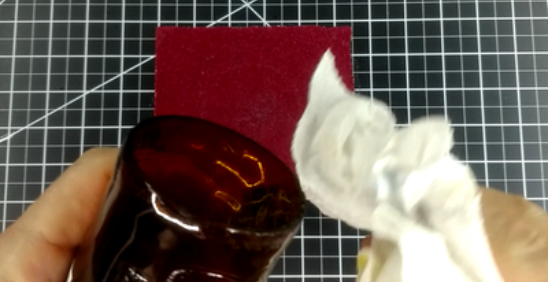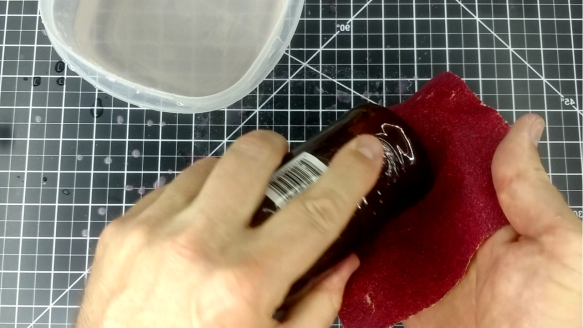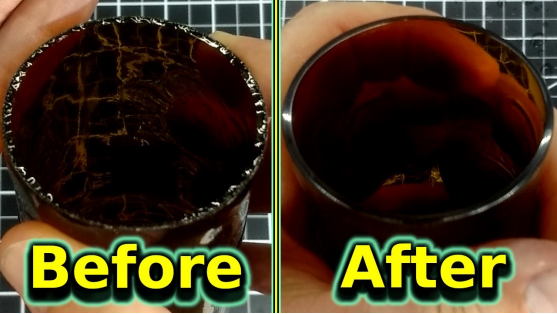Glass bottles, renowned for their versatile liquid storage capabilities, demand meticulous attention to safety following the cutting process, owing to their inherently sharp and hazardous edges. In this comprehensive discourse, we underscore the utmost importance of post-cut glass bottle edge polishing, serving not only as an imperative safety measure but also as an invaluable technique to elevate the bottle’s professional demeanor. Within these pages, we present a detailed, step-by-step guide elucidating the process of achieving an impeccably smooth and lustrous finish.
The Prerequisite of Polishing Glass Bottle Edges:
Beyond the realm of aesthetics, the act of polishing glass bottle edges assumes paramount significance in light of the pronounced safety risks posed by rough and jagged contours. These imperfections not only harbor the potential to cause painful injuries but also jeopardize the overall handling and usability of the bottle. Thus, the art of edge polishing assumes a dual purpose, facilitating the mitigation of safety hazards while bestowing upon the bottle an air of refinement, rendering it suitable for diverse applications.
The Requisite Tools:
Prior to embarking on the polishing process, meticulous preparation is in order. The following implements constitute the essential tools at hand:
- Glass bottle
- Sandpaper in three distinct grits: 80, 120, and 220
- Water
- Flat surface
- Safety goggles
- Work gloves
- Optional: Dremel tool affixed with a diamond bit for attaining a glistening sheen
A Methodical Guide to Polish Glass Bottle Edges After Cutting:
Step 1: Prioritizing Safety:
As with any undertaking involving glass manipulation, safety emerges as the foremost priority. Adorn the appropriate protective gear, such as safety goggles to shield the eyes from glass dust and work gloves to safeguard against potential lacerations.
Step 2: The Precision of Grit Selection:
Embark on the endeavor using an 80-grit sandpaper to proficiently abrade the rough edges. Gradually transition to a 120-grit sandpaper to eliminate any residual scratches lingering from the previous stage. The final touch entails the application of a 220-grit sandpaper, culminating in an unparalleled smoothness and refinement.
Step 3: The Elegance of Wet Sanding:
Elevate the craft through the adroit implementation of wet sanding, a technique designed to prevent unsightly scratches on the glass surface while concurrently averting sandpaper clogging. Submerge the sandpaper in water and proceed to delicately sand the glass bottle’s edge using gentle circular motions, ensuring the sandpaper maintains unwavering contact with the glass surface for uniformly impeccable results.
Step 4: The Art of Inspection:
At periodic intervals throughout the sanding process, judiciously assess the edge’s smoothness. Rinse the glass bottle’s edge with water, meticulously dry it with a towel, and meticulously inspect for any residual rough spots. If deemed necessary, continue the process of sanding with the 80-grit sandpaper until the edge attains a state of complete smoothness. Proceed accordingly with the 120-grit sandpaper, followed by the 220-grit sandpaper to achieve a flawless culmination.
Step 5: The Optional Flourish of Edge Polishing:
For discerning enthusiasts seeking an incomparable glossy finish, the implementation of a Dremel tool equipped with a diamond bit presents a compelling option. Artfully positioning the Dremel tool at a 45-degree angle to the glass edge, gently polish the surface in harmonious circular motions. The resplendent diamond bit eradicates any residual blemishes left from sanding, culminating in an exquisitely radiant visage.
Step 6: The Culmination of Pristine Elegance:
Upon successfully polishing the glass bottle’s edge to perfection, reverently rinse it with water, carefully toweling it dry. A fastidious endeavor to eradicate any lingering glass dust or debris accrued during the sanding and polishing process completes the ceremonial procession.
Prudent Tips for the Discerning Artisan:
Consistency in Technique: Exercising an unwavering sanding technique replete with even pressure and speed remains paramount in achieving a homogeneously smooth edge.
- Cultivating Patience:Glass bottle edge polishing is an artistry demanding meticulous attention and patience. Hasty endeavors risk yielding uneven edges or compromising the integrity of the bottle. Prudence dictates the embrace of deliberation in the pursuit of superlative results.
- The Art of Polishing Compounds: For the connoisseur pursuing an even glossier veneer, the application of a polishing compound to a soft cloth assumes the role of an enabler, enhancing the final outcome after sanding.
- The Serenity of a Sanding Block:In pursuit of maintaining an impeccably even edge while preserving the artisan’s comfort, the judicious employment of a sanding block assumes the mantle of an ally during extended sanding sessions.
- The Sanctity of an Organized Workspace:Embrace the virtue of orderliness and cleanliness within the confines of the workspace. A flat surface enveloped by a protective towel or mat safeguards the glass bottle from inadvertent scratches, a testament to meticulous craftsmanship.
- Safety First: As an ode to sagacity, never overlook the primacy of safety. Shield your eyes with safety goggles and shield your respiratory system with a mask, thus countering the potential peril posed by glass dust and debris during the polishing process.
Conclusion:
The ceremonial act of polishing glass bottle edges after cutting epitomizes an indispensable stride towards safety and an unmistakably professional demeanor. The practice of wet sanding with diverse grits of sandpaper serves as the unequivocal choice for effecting this transformation. A judicious eye must continuously inspect the edge throughout the process, ensuring a consummately smooth and refined conclusion. For those seeking to adorn their creation with an exquisite gloss, the optional inclusion of a Dremel tool, adorned with a diamond bit, bestows an unparalleled brilliance upon the bottle’s visage. The measured employment of the right tools and techniques transforms the endeavor into an artful and secure DIY project, where polished glass bottle edges stand as a testament to safety and sophistication in harmonious unison.



